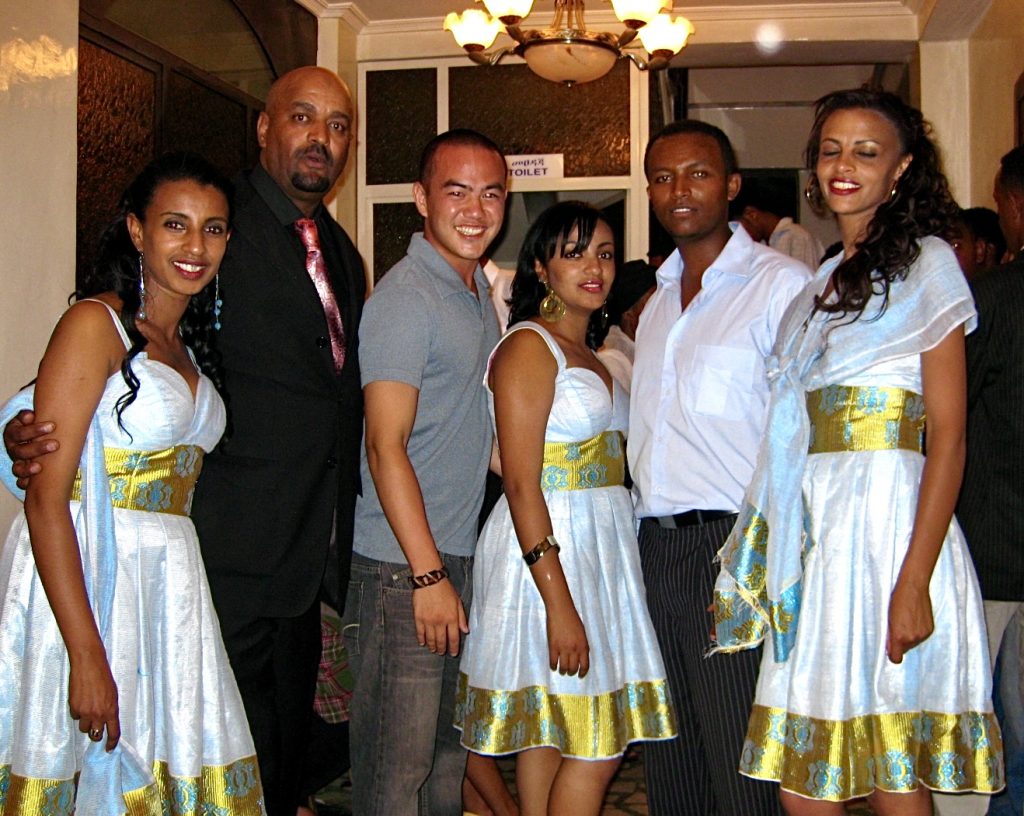
“Across the continents we explore, all’s fair in this game of love and war.”
Probably the most memorable entry I’ve had into a nation is Ethiopia. I had just flown in from Tanzania, was tired from a hangover to celebrate my last night out, and I had arrived to Addis Ababa (the capital of Ethiopia) expecting a calm night of rest.
Greeting me upon my arrival was a man by the nickname King Rasta who had other intentions. I was introduced to him by someone I knew from Tanzania. He told me we’re heading to a wedding. So I replied, “Why not.”
But to wake me I told him I would first need a drink, to which his friends happily obliged.
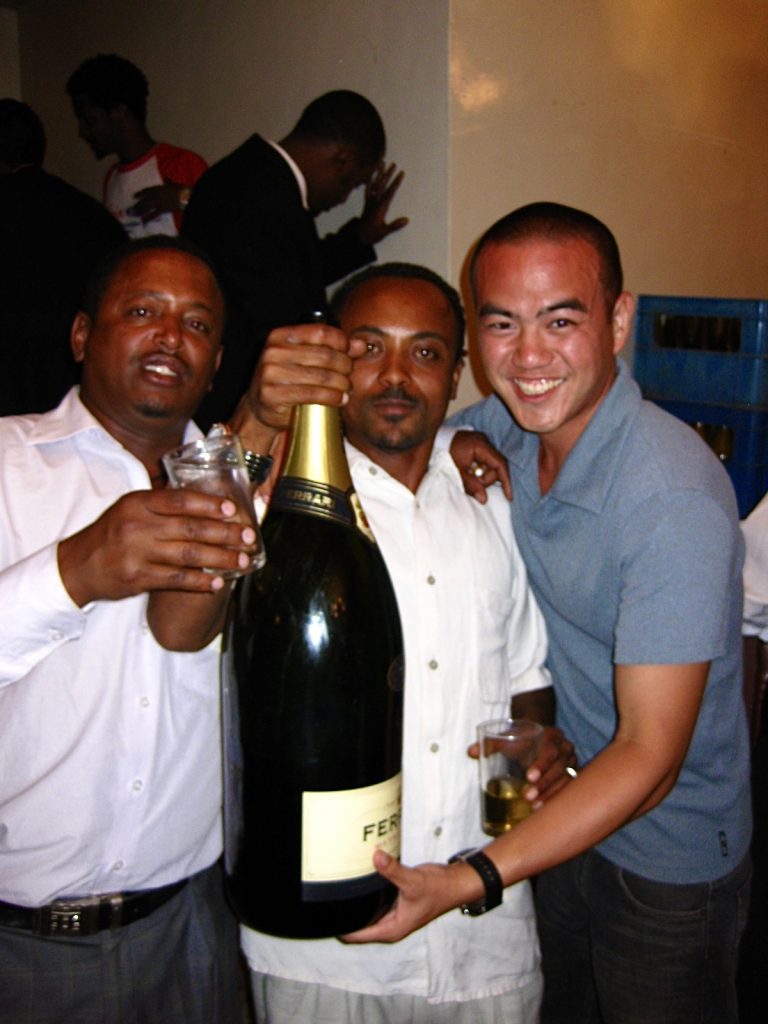
It is instances like these I love about traveling. Just the sheer spectacle of it all and how you can never predict how your trip is going to unfold because you’re open to anything, stuff like heading straight from the airport to a wedding without even having dropped off your backpack.
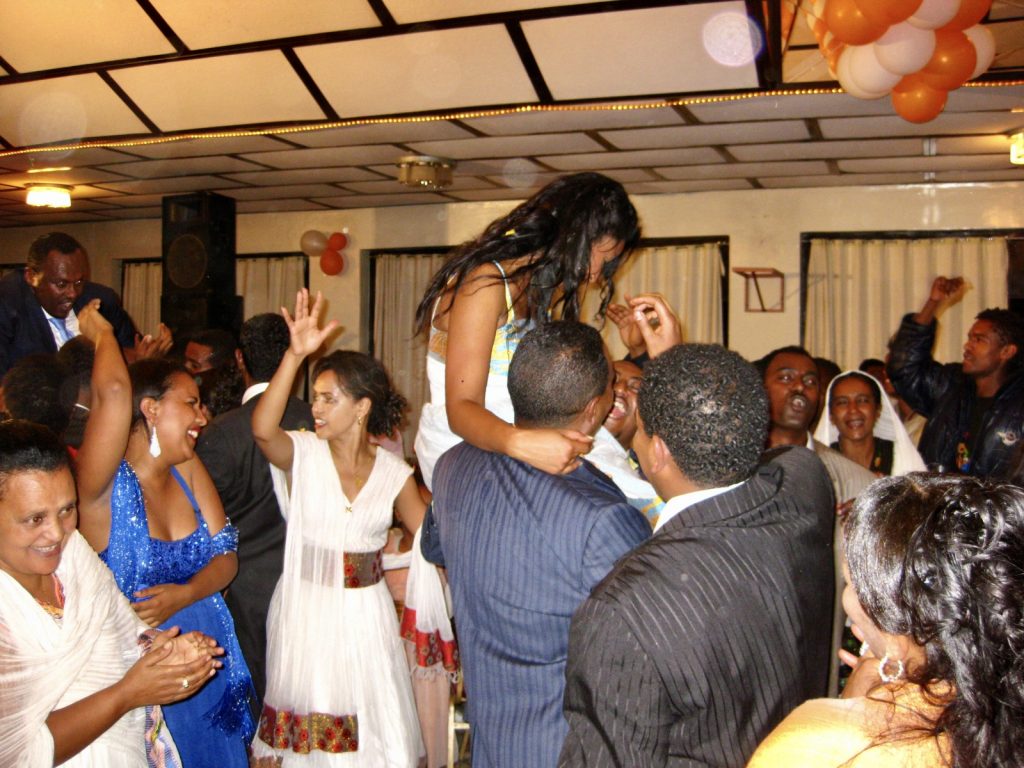
In terms of location, Ethiopia is north of Kenya and Tanzania and south of the Middle East, of countries like Yemen and Saudi Arabia.
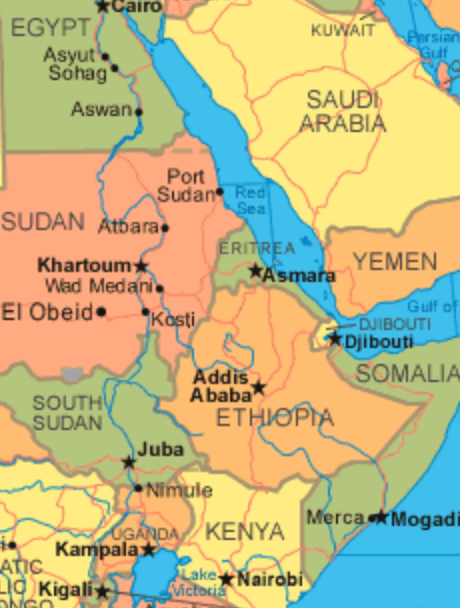
Because of its relative centrality between the Middle East and the interior of Africa, the locals here looked very different from the Africans I saw in Tanzania. There was a much greater Arabic influence in its people, both in appearance and customs.
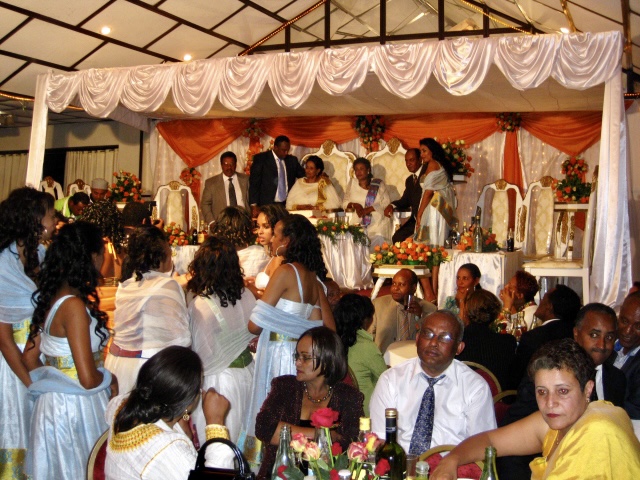
Ethiopia also felt much more developed than Tanzania, as it was unlikely most Tanzanians could afford such lavish affairs for weddings. I heard from Rasta that a family may celebrate their wedding for a month-straight if they could afford it, with each day another festival.
Sounds like my kind of people.
After the wedding party, a group of 20 of us headed to a lounge. It was here my first time drinking Johnnie Walker with carbonated water like Perrier. The Ethiopians I was with all drank whiskey this way. I didn’t like it at first but I find it ironic that right now I’m drinking the same mix. I usually drink my whiskey straight but I end up drinking too fast, so I grabbed sparkling water a few nights ago to slow my pace.
When we finally got to Rasta’s house that night, he had prepared for me to sleep in his room. I was shocked by the gesture and initially refused, but he persuaded me that it is Ethiopian custom that a guest take the best room available in the house. He slept in his sister’s old room. The next day I got to interact with his parents, who were just as gracious.
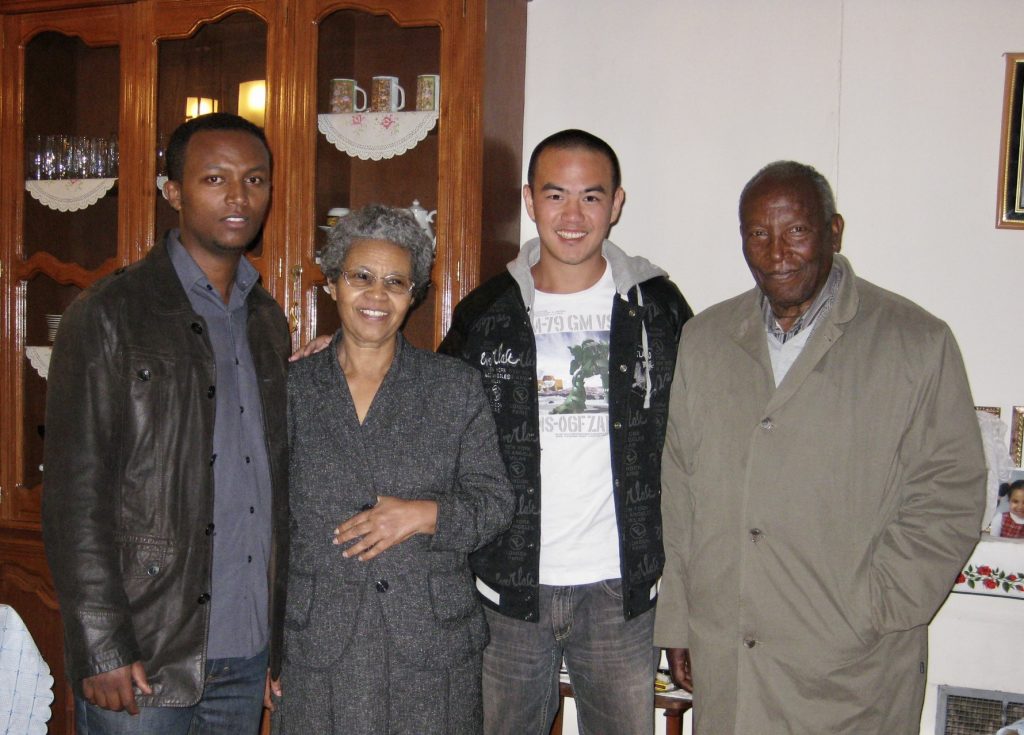
The above gesture was one of the kindest that a stranger has ever offered me, and provided me a greater awareness of what hospitality means. I was only 25 at the time, and this was my first go-through Africa. The experience was so different from what I had conceived prior to my arrival — it was good in the sense that it educated me.
I feel too much of our knowledge these days derives from the Internet and clickbait. So we grow up with a distorted mind-frame in which we know a lot about the world but experience very little of it. My hope in writing these entries is that it compels in audiences to devote more time to actually going out into the world and exploring it for yourself.
Instead of passively viewing content, become an active participant in events. Read less, Do more. As you age, the memories and recollections you have become much more vivid that way, with your growth immeasurable.
Of Sub-Saharan African countries, outside of South Africa, Ethiopia is probably the most known for its cuisine internationally. If you’ve ever eaten at an Ethiopian restaurant, you’re likely to remember the experience because of how unique it is. The staple dish that goes with most any meal is injera, a type of sourdough bread that is spongy in texture. Laying over it are various dishes, which you eat with the bread. Ethiopians will use their right hand to grab a piece of injera as they then mix it up with the dishes. It’s unique in that you’re eating your ‘plate’ with the meal. I couldn’t locate my old photos but found this one online as an example:
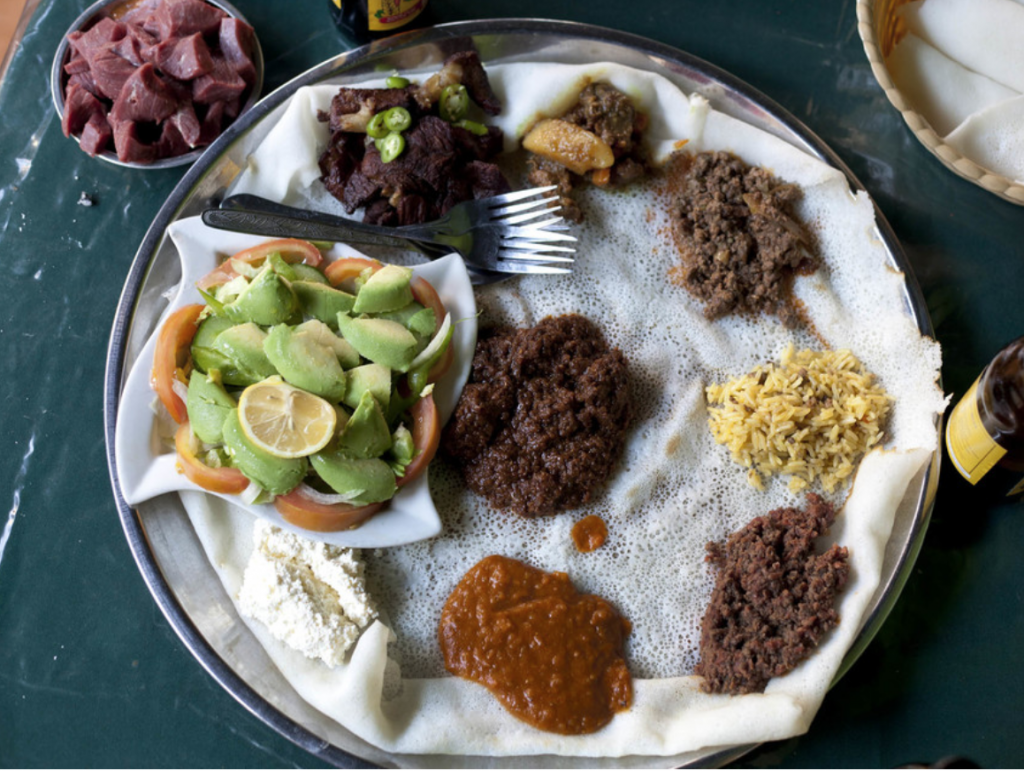
I also ate raw meat straight from the butcher. Rasta took me here to try authentic Ethiopian cuisine. This dish, tere siga, requires no preparation and you literally eat it raw, as you cut up and dab slices of beef into mitmata and awaze, which consist of a peppers, cardamom, cloves and salt powder mix and chili pepper sauce, respectively.
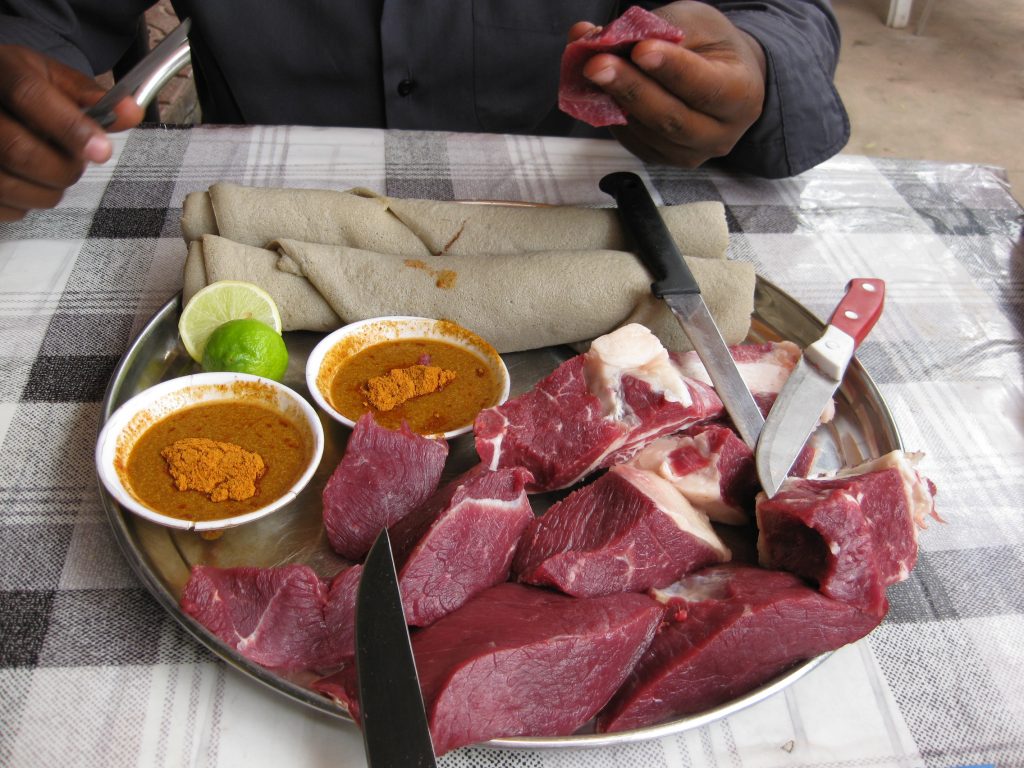
Pretty gnarly, right? They’ve eaten this way for centuries. As a polite guest, I dug in.
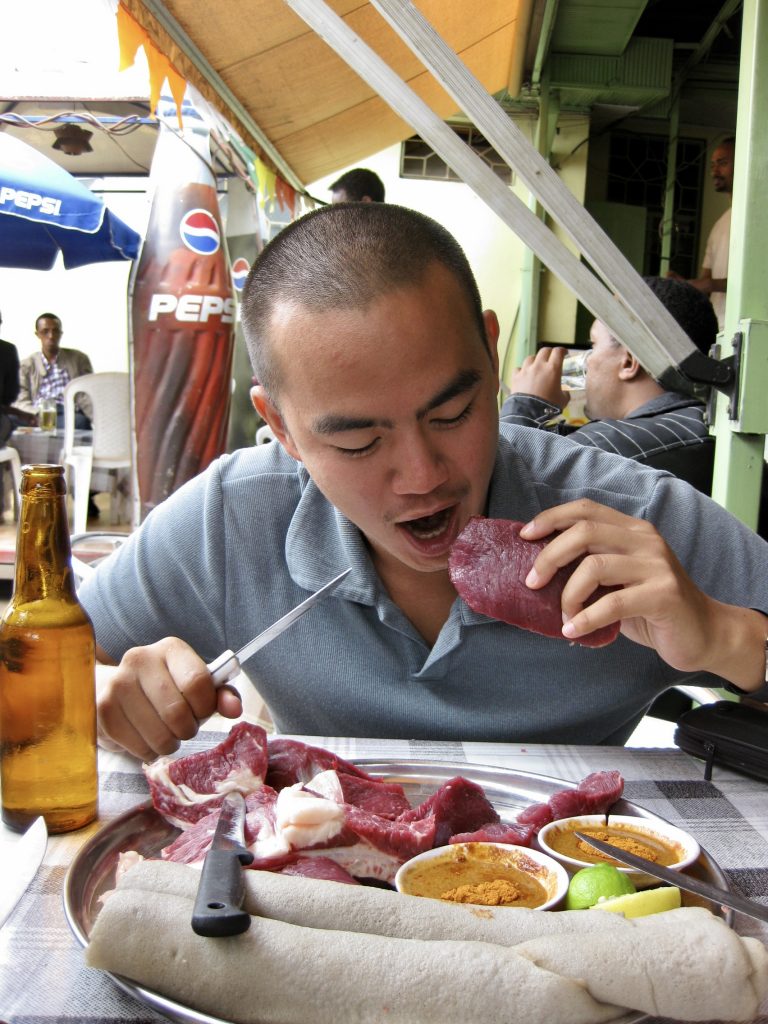
I honestly can’t say it was tasty. It tastes like how it looks, an acquired taste I’m guessing. Tere siga is a dish in which the meat is firm and dry. Ethiopians assert it tastes different from American cuts because American cattle is grain fed, which makes it more watery and soft as a result.
The above information will likely in no way, shape or form impact my future, but it’s little takeaways like this that make a trip memorable.
Aside from these events, I visited a few museums, cathedrals, and mosques. Ethiopia has some of the oldest human skeletal remains in existence, dating back several millions of years. But other than that, I don’t remember much from these excursions.

It is my memories of Rasta I remember most, and I appreciate his graciousness and the hospitality of all the wedding guests I had met on my arrival in Ethiopia. My stay was brief yet succinct, and then I had to catch a plane to Egypt to see who would greet me next.